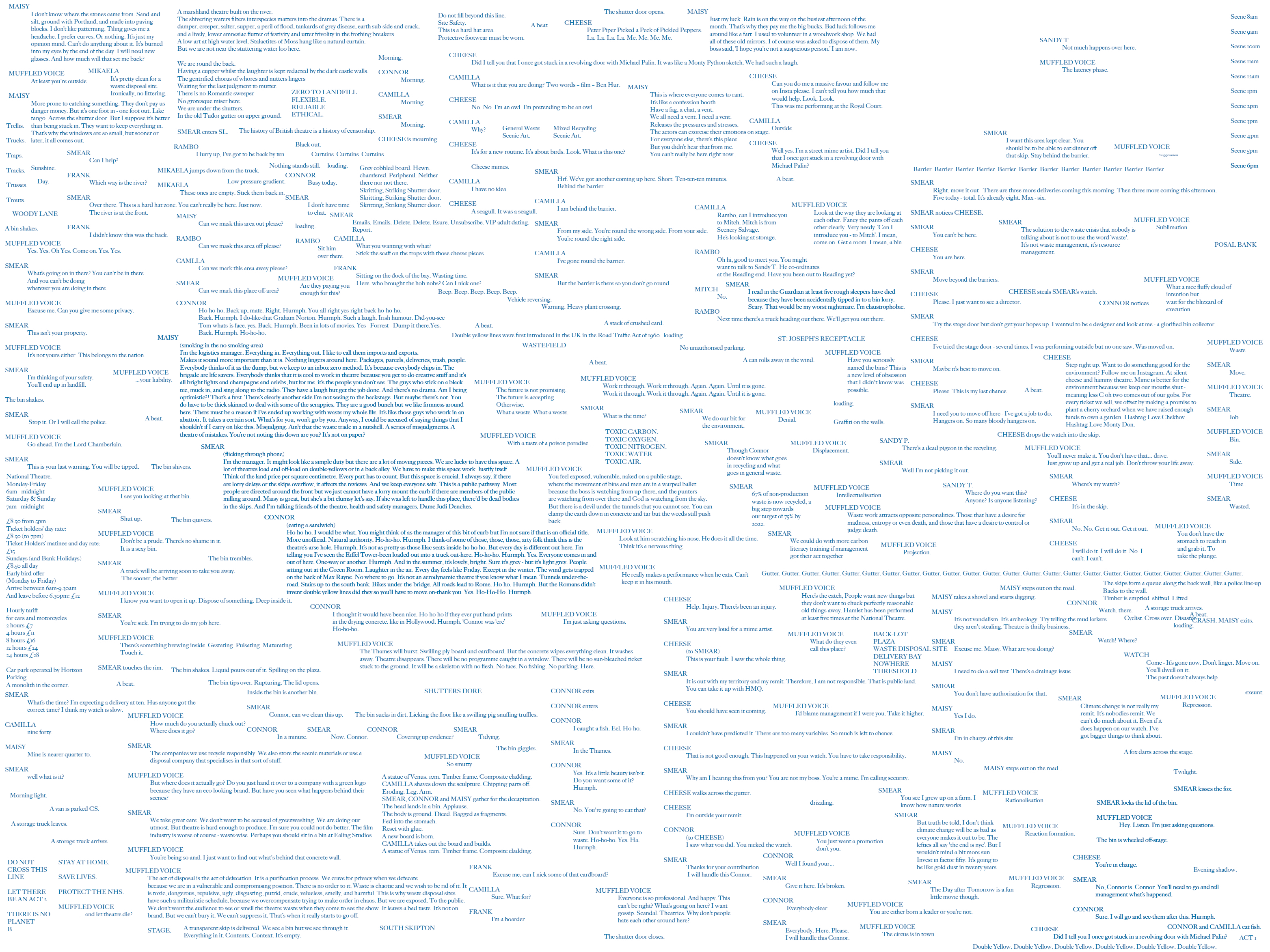THE BACK SIDE OF THE NATIONAL THEATRE
Hamish Muir
The National Theatre, London, UK
Hamish Muir
The National Theatre, London, UK

‘Shutter is a play for voices that is set at the loading bay of the National Theatre, London. The bay is used for deliveries, loading materials, and waste disposal. Though the National Theatre was not designed to have a front and rear, this pavement area directs the almost bodily functions of the theatre away from the inviting promenade on the riverside.
My PhD research looks at waste generated by the theatre industry and uses a practice of playwriting to explore architectural, and design issues around waste (in its meaning, aesthetics and management). The choice of setting is not to critique the National Theatre as waste is symptomatic of every theatre and industry but rather to explore the factors specific to place that may give rise to waste. Shutter was an attempt to use the devices of dramatic writing to conjure a specific place where waste is generated through a blend of documentarian, fictional and abstracted voices that accumulate in layers of text.
Most playwriting focuses on voice (and specifically the human voice as it is an assumption that the performer has a mouth), the piece explores the awkwardness and limitations of creating a sense of place without visuals, space or materials and the resulting, obscured ‘place of waste’ produced through character, action, narrative, stage direction, and dialogue. In the piece, waste is characterised as a subversive, subconscious material that slowly reveals the character's hidden secrets and motivations, which they keep behind performative façades as a necessity to prove their worth.
If waste can be considered evidence of behaviour, then it can confront the characters with their own actions, which they may find uncomfortable. One of the final actions in the play is the entrance of a transparent disposal skip, which exposes all of the waste publicly.’
Hamish Muir